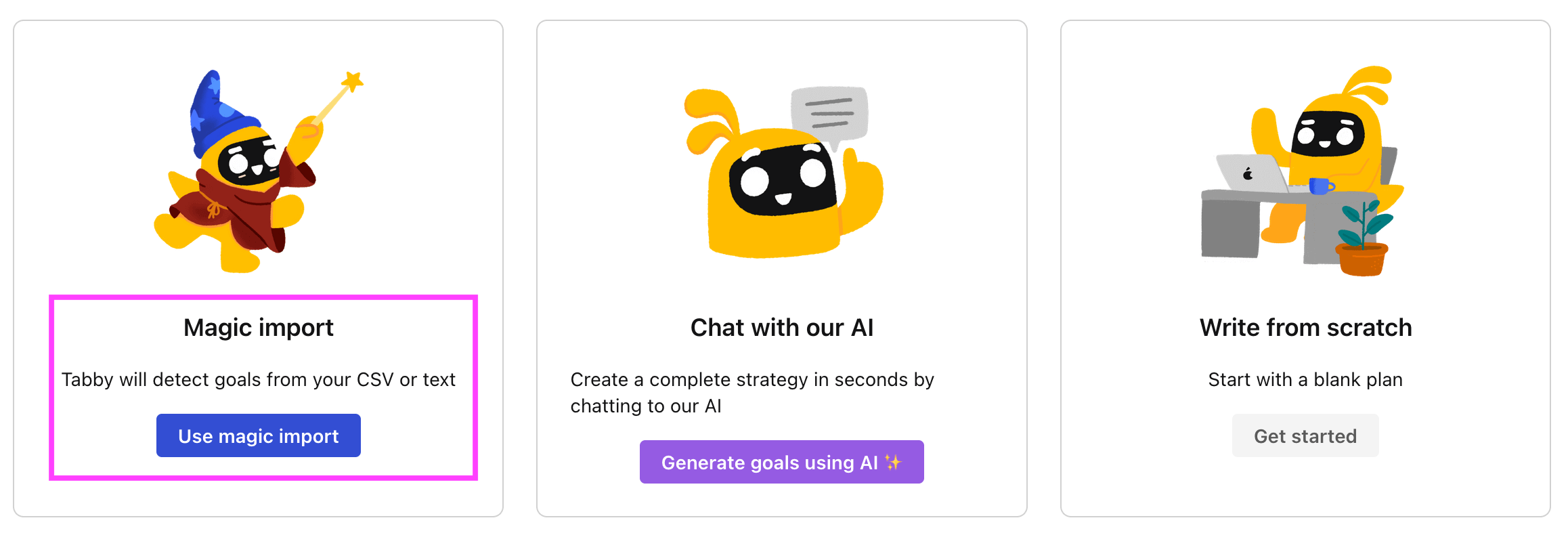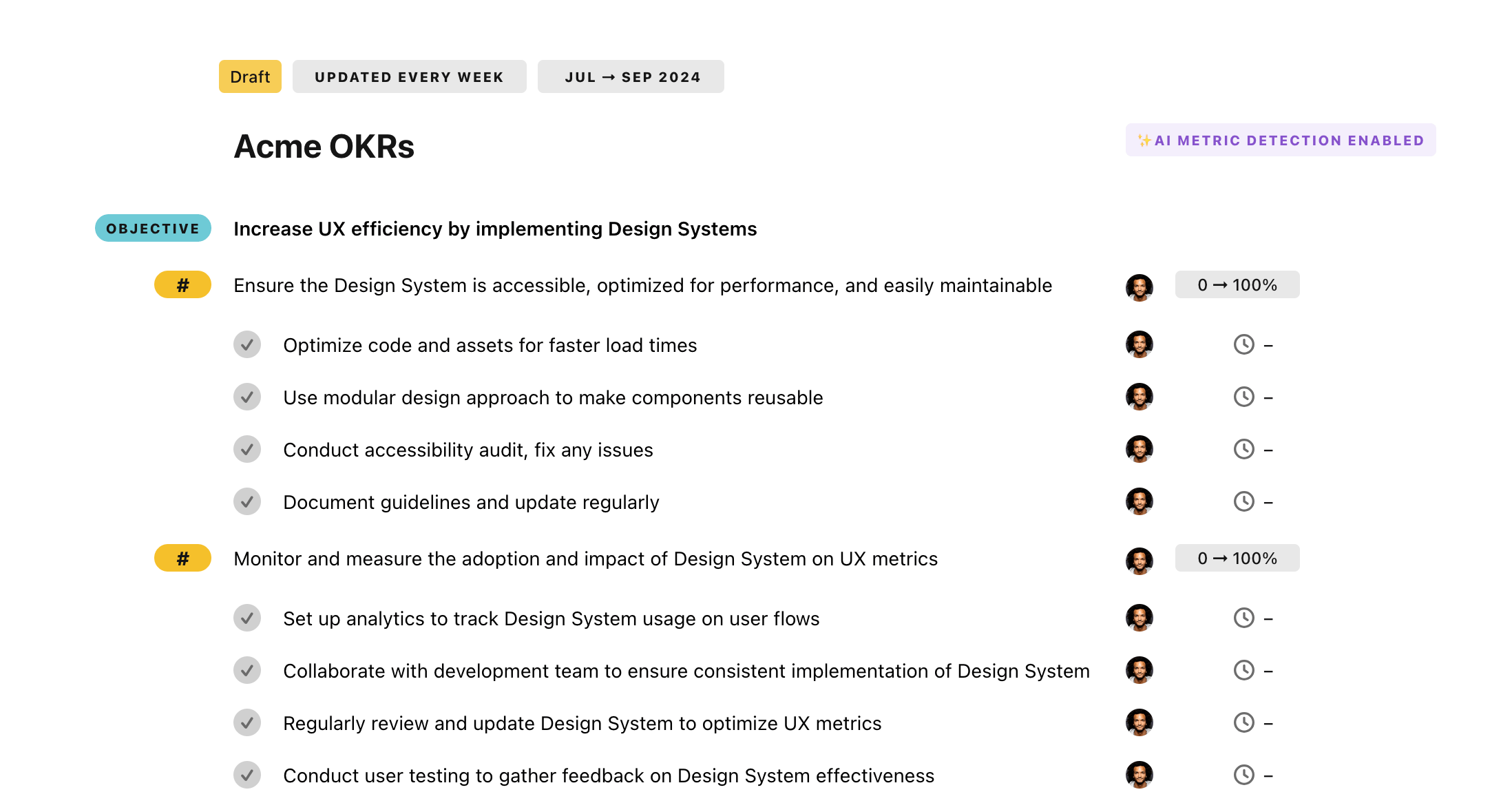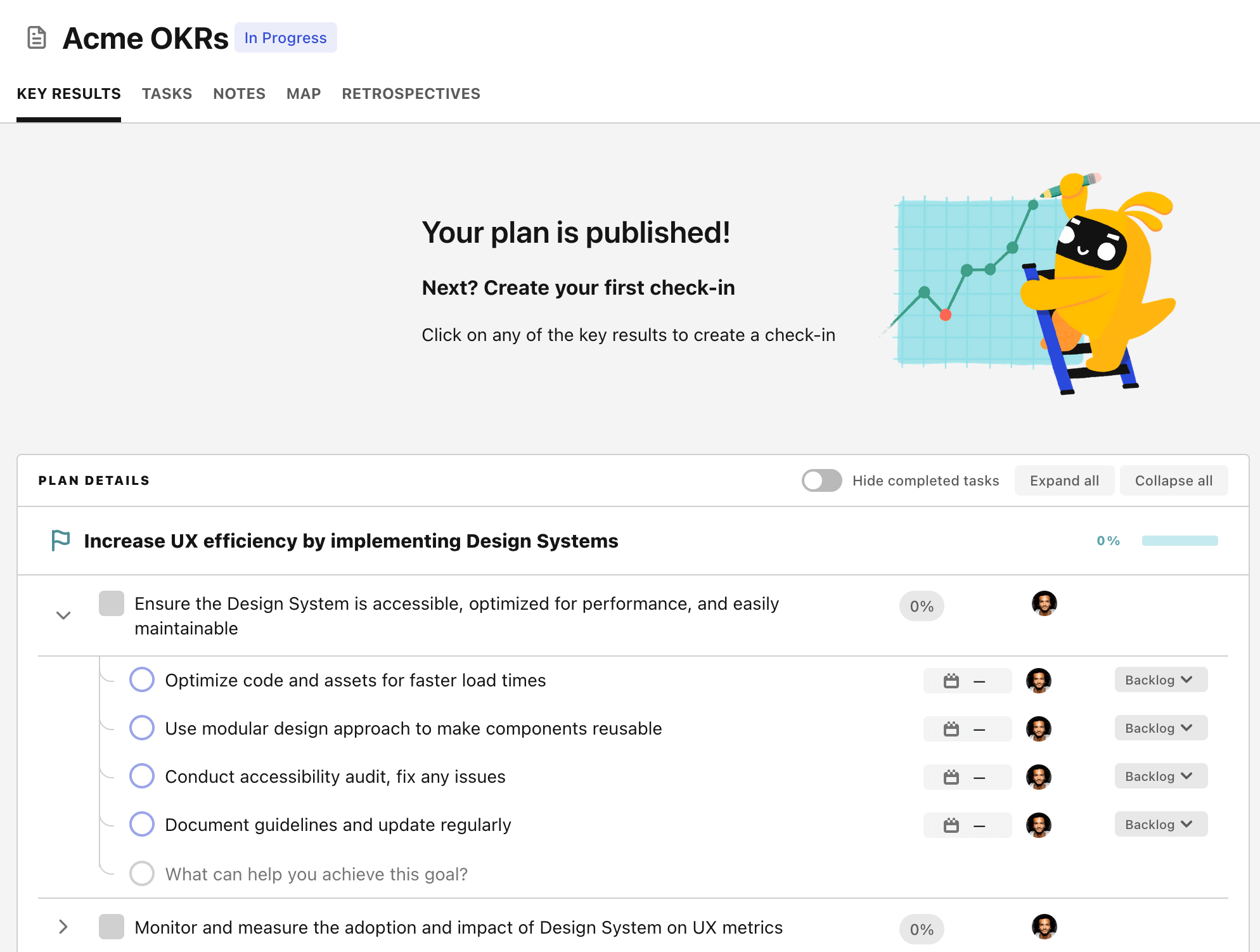OKR template to enhance product reliability for customers
Your OKR template
The second objective is to roll out three system stability updates based on customer feedback and analytics. This means identifying stability problems via customer feedback, implementing, testing, and then developing the updates. The ultimate goal is to use this feedback to create more stable and reliable systems for the end user.
The third objective is focused on reducing the product failure rate by 15% through extensive testing and quality control. This objective is designed to reduce instances of product faults or failings. This is done through introducing high-level testing protocols, conducting regular training on quality standards, and implementing thorough quality control checks at all manufacturing stages.
Overall, the OKR is centered around enhancing product reliability for the customers, tracking the results with a score format, and driving initiatives to reach the objectives. There is an intentional focus on quality control and aftercare with the ambition to enhance customer perception and reduce product faults.
ObjectiveEnhance product reliability for customers
KRIncrease customer satisfaction ratings around reliability by 10%
Train customer service team in issue resolution and reliability
Enhance product quality checks for increased reliability
Implement a customer feedback system to identify reliability issues
KRRoll out 3 system stability updates based on customer feedback and analytics
Identify stability issues from customer feedback and analytics
Implement and test the stability updates
Develop system stability updates addressing identified issues
KRReduce product failure rate by 15% through rigorous testing and quality control
Introduce advanced testing protocols for product reliability
Conduct regular training on quality standards for manufacturing staff
Implement rigorous quality control checks at every production stage
How to edit and track OKRs with Tability
You'll probably want to edit the examples in this post, and Tability is the perfect tool for it.
Tability is an AI-powered platform that helps teams set better goals, monitor execution, and get help to achieve their objectives faster.
With Tability you can:
- Use AI to draft a complete set of OKRs in seconds
- Connect your OKRs and team goals to your project
- Automate reporting with integrations and built-in dashboard
Instead of having to copy the content of the OKR examples in a doc or spreadsheet, you can use Tability’s magic importer to start using any of the examples in this page.
The import process can be done in seconds, allowing you to edit OKRs directly in a platform that knows how to manage and track goals.
Step 1. Sign up for a free Tability account
Go tohttps://tability.app/signup and create your account (it's free!)
Step 2. Create a plan
Follow the steps after your onboarding to create your first plan, you should get to a page that looks like the picture below.

Step 3. Use the magic importer
Click on Use magic import to open up the Magic Import modal.
Now, go back to the OKR examples, and click on Copy on the example that you’d like to use.

Paste the content in the text import section. Don’t worry about the formatting, Tability’s AI will be able to parse it!

Now, just click on Import from text and let the magic happen.

Once your example is in the plan editor, you will be able to:
- Edit the objectives, key results, and tasks
- Click on the target 0 → 100% to set better target
- Use the tips and the AI to refine your goals
Step 4. Publish your plan
Once you’re done editing, you can publish your plan to switch to the goal-tracking mode.

From there you will have access to all the features that will help you and your team save hours with OKR reporting.
- 10+ built-in dashboards to visualise progress on your goals
- Weekly reminders, data connectors, and smart notifications
- 9 views to map OKRs to strategic projects
- Strategy map to align teams at scale